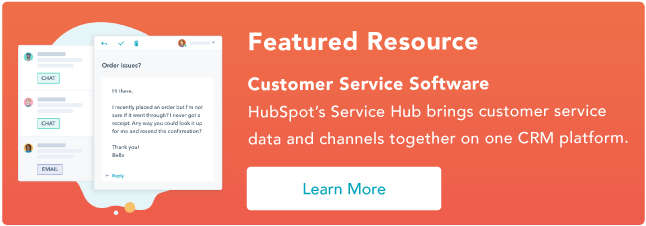However, the definition of user activation is not universally standardized—it is fluid and varies based on the nature of the product or service.
For instance, in a music streaming app, user activation might occur when a user streams their first song or playlist. Conversely, in a form builder tool, it could be the moment a user creates their first form.
The Importance of User Activation
User activation plays a pivotal role in determining the growth trajectory of digital businesses.
Successful user activation translates to effective user engagement, fostering customer loyalty and facilitating a higher lifetime value of a user.
It serves as a leading indicator of the product-market fit and can provide valuable insights into the efficiency of a product’s onboarding process. Hence, businesses that focus on improving user activation rates often enjoy healthier growth and profitability.
In fact, a 25% increase in activation led to a 34.3% boost in MRR, according to data modeling by automation software company Fairmarkit.
How to Increase User Activation
Given the crucial role user activation plays in determining business success, it's important to adopt a systematic and multi-faceted approach to increase it. Here are six key strategies:
1. Streamlined Onboarding
An efficient and intuitive onboarding process lays the foundation for higher user activation. The objective is to guide users to their 'aha' moment—the point where they perceive the value of your product—swiftly and smoothly. Make the process user-friendly, eliminate redundant steps, and use compelling visuals and guided tours to facilitate a better understanding of your product.
2. Personalization
Personalized user experiences tend to resonate more effectively, leading to higher activation rates. This involves tailoring the product experience according to individual user needs, preferences, and behavior, thus ensuring that they perceive the value of your product quickly and vividly.
Pro tip: HubSpot users can show personalized content within email templates, subject lines, and even landing pages. Learn how to use personalization tokens based on contact data in your CRM.
3. User Education
A well-informed user is more likely to become an activated user. Prioritize educating your users about the features, functionalities, and potential of your product through tutorial videos, FAQs, webinars, in-app tips, or blog posts. This not only aids in increasing user activation but also empowers users to extract maximum value from your product.
Pro tip: Setting up a knowledge base is a great way to help customers who prefer self-service, while also keeping educational resources handy for your service team.
4. Incentivization
Providing incentives can nudge users towards activation. These can take the form of discounts, extended trial periods, unlocking premium features, or providing rewards for completing specific actions within the product.
5. Clear Value Proposition
Ensure your users have a crystal-clear understanding of your product's unique value proposition. Emphasize the benefits they stand to gain and provide tangible, relatable examples of how your product can enhance their workflow or lifestyle.
6. Regular Optimization
Consistently track and analyze your user activation process, identify bottlenecks or shortcomings, and refine your strategies accordingly. Leverage tools for A/B testing, data analytics, and user feedback to gain insights and continually iterate on your process.
Tracking and Measuring User Activation
A crucial aspect of enhancing user activation is the measurement and tracking of relevant metrics. Define clear and measurable activation criteria that resonate with the value proposition of your product.
These could be specific actions or a series of engagement levels within the product. Regularly monitor these metrics and segment the data based on user demographics or behavior to identify trends, patterns, and areas requiring improvement.
For example, you may find that users from a particular demographic activate at a higher rate than others. This could suggest a need to tailor your onboarding process or marketing messaging to better cater to different segments.
A/B testing can be particularly useful here, allowing you to compare different approaches and identify which ones resonate best with your users. By continually testing and refining your strategies, you can optimize the user activation process and ensure it aligns with your users' evolving needs and expectations.
Examples of Great User Activation
When it comes to effective user activation strategies, several brands have led the way. Let's explore some of these examples:
Duolingo: Gamified Onboarding and Learning

Duolingo, a language-learning platform, stands out for its immersive, gamified onboarding process. As new users sign up, they are immediately plunged into a short language lesson tailored to their chosen language and learning goals. By instantly engaging users with the core functionality of the app, Duolingo ensures users quickly perceive its value. The app also encourages activation through in-app rewards, setting it up as a prime example of excellent user activation.
Dropbox: Incentivizing Activation

Dropbox has long been celebrated for its unique approach to user activation. The cloud-based file hosting service offers additional storage space as an incentive for users to complete various activation steps, such as installing the desktop app or inviting friends to join Dropbox. This approach not only speeds up user activation but also promotes user retention and referral.
Canva: Streamlined Education

Canva, the graphic design tool, employs a simple yet powerful onboarding tutorial that immediately engages new users. Upon signing up, users are presented with a quick, interactive design tutorial, allowing them to create their first design while learning the basics of the tool. By merging user education with hands-on experience, Canva ensures that users understand and value the product right from the get-go.
LinkedIn: Personalization and Value Proposition

LinkedIn, the professional networking platform, uses a personalized onboarding process to drive user activation. New users are guided through a series of steps to complete their profiles, connect with colleagues, and follow relevant companies or groups. LinkedIn highlights the value of each action – such as greater visibility for completed profiles – ensuring users understand the benefits of activation.
Slack: Interactive Product Tour

Slack, the team communication platform, begins its onboarding with an interactive product tour. New users receive a series of messages from Slackbot, the platform's AI assistant, guiding them through the app's features and functionalities. The conversational, hands-on approach helps users quickly understand and engage with the product, paving the way for swift activation.
These examples highlight the impact of well-structured onboarding, incentives, user education, personalization, and interactive tutorials in driving user activation. By studying and drawing inspiration from these success stories, businesses can craft effective strategies to enhance their own user activation rates.
The Future of User Activation
As digital landscapes evolve and user expectations rise, businesses need to be more proactive and innovative in their approaches to user activation. Emerging technologies such as artificial intelligence and machine learning can offer new opportunities for personalization and user engagement, helping to drive activation rates even higher.
However, despite the advancements in technology, the fundamental principles of user activation remain the same. It's about understanding your users, offering them real value, and guiding them to that all-important 'aha' moment as quickly and seamlessly as possible.
Remember, every user interaction with your product is an opportunity for activation. By focusing on a well-structured onboarding process, personalizing user experiences, educating your users, incentivizing engagement, articulating your value proposition clearly, and adopting a data-driven approach to continual optimization, you can significantly boost user activation rates and set your product on the path to success.
In a world where user attention is a precious commodity, user activation is more than just a metric—it's a philosophy that places the user at the center of your product strategy. By adopting this philosophy, you're not just building a better product, but also creating meaningful relationships with your users that can ensure the long-term success of your business.


